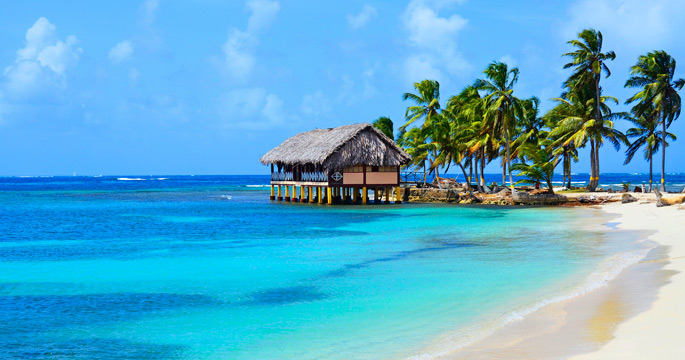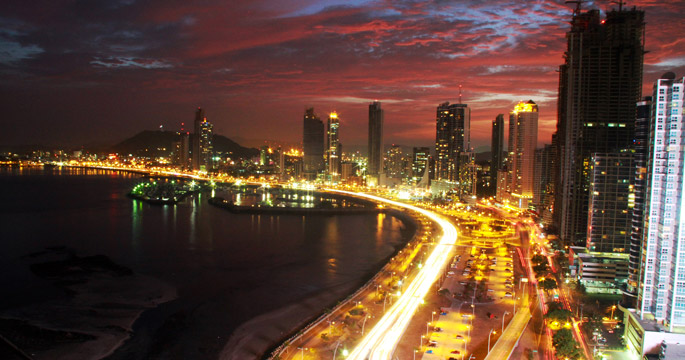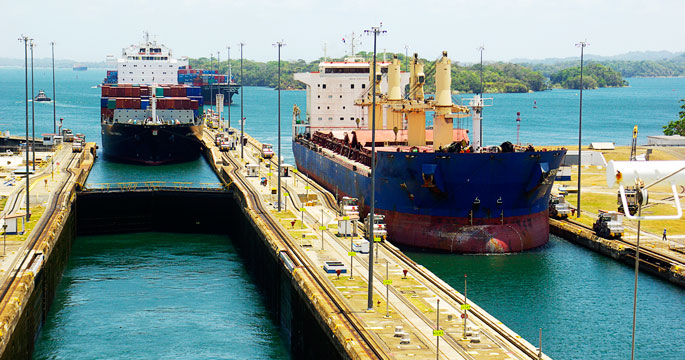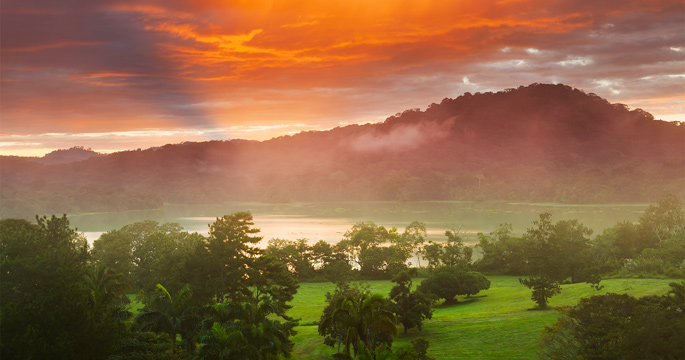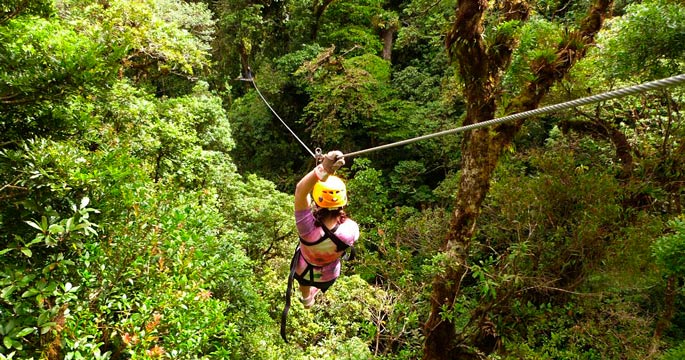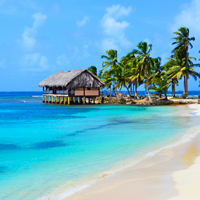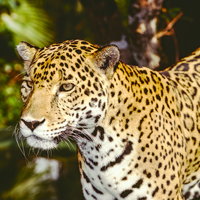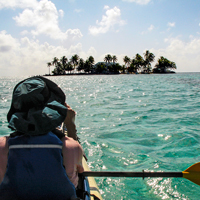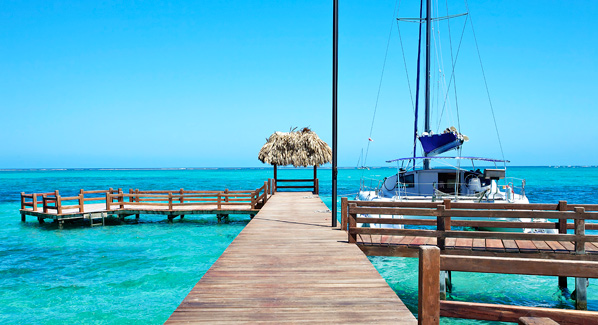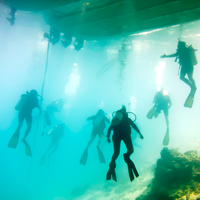If you think Panama is just a short cut for ships, there’s much to discover. The lands surrounding the famous canal offer a rich mixture of big city amenities, rural charms and natural attractions. From idyllic palm- fringed Caribbean islands to virgin rainforests and Pacific surf, Panama is a land that rewards the traveler with unexpected delights.
1 The Big Ditch
You’ve known about the Panama Canal since elementary school geography. Now, it’s time to see this historic engineering marvel for yourself. Visit the museum, watch ships from around the world go through the locks and take in the view from the Bridge of the Americas. For the ultimate canal experience, you can even book a single-day cruise through the locks and Lake Gatun.
2 The Ocean’s Abundance
The name Panama is said to mean abundance of fish. With more than 1,500 miles of coastline fronting both the Atlantic and Pacific oceans and hundreds of offshore islands and shoals, the surrounding waters provide a rich habitat to nurture aquatic resources. This bounty delights not only anglers, who make pilgrimages to renowned fishing resorts such as the Tropic Star Lodge, but also restaurateurs, who turn the catch of the day into a range of fresh, savory offerings.
3 Prosperous Times
Panama has the fastest growing economy in Central America, spurred by a vibrant banking industry, and upgrades to the canal system that will soon allow larger ships to pass. Signs of this prosperity are evident throughout Panama City, from the gleaming high-rises along the waterfront and downtown’s upscale eateries to urban retail venues where designer labels dominate.
4 Nature Nearby
You don’t have to go far in Panama to transition from urban amenities to natural attractions. For a day trip with a lighter dose of nature, you can visit rainforest parks such as the Summit Botanical Gardens or take the ferry to Isla Taboga. The more adventurous can sign on for coastal snorkeling and kayaking excursions, hike the forests of Changres National Park, explore an underground river near Lake Bayano or whitewater raft on the Rio Boqueron.
5 Crossroads of the Americas
Not only a geographic midpoint between North and South America, Panama is also a cultural crucible that’s been dynamically evolving since the days the Spanish first arrived. The region is still home to seven Native American cultures, has both African and Eastern influences and, for more than a century, has seen a substantial U.S. presence.
6 Eco Ethics
Scattered throughout the green highlands and the country’s numerous coastal islands are a number of nature-themed lodges built from native materials, powered by sunlight and serving up locally grown fare. This trend is both a reflection of ecological consciousness and logistical practicality. In venues where electricity and roadways are scarce, but natural bounty abundant, it makes sense to live closer to the land.
7 Island Connection
Some of the fill excavated for the canal was used to create a three-mile- long earth jetty connecting the mainland to a trio of small islands just off the coast of Panama City. Known as the Amador Causeway, it has become a favorite venue for walkers and cyclists—though you can also catch a cab out to Perico, Culebra, Flamenco and Naos islands to enjoy the cafes, shops and ocean views of ship traffic. The Smithsonian’s Marine Exhibition Center is also worth a visit.
8 A Taste of China
Chinese immigrants have been adding their cultural spice to Panama’s ethnic mix ever since the first railway workers arrived in the late 1800s. For many years, a significant portion of the country’s retail network was owned by Chinese merchants, and there are still a number of ethnic communities known as barrios chinos. More recent immigrants from Taiwan and Hong Kong have assimilated into the national cultural mix more readily, but reminders of their heritage can be found in some of the best Chinese restaurants in the entire Americas.
9 Archipelagos Aplenty
Panama’s coasts are punctuated by a number of archipelagos worthy of a visit. On the Caribbean side, hard up against the Costa Rican border, the Bocas Del Toros deliver the beachcomber lifestyle, with clear waters, white sands and funky waterfront cafes and lodges. Some 230 miles to the east, the equally beautiful and even more remote San Blas Islands offer true solitude—only 40 of these 360 small green gems are inhabited. Move to the Pacific, where cooler aquamarine waters wash the shores, and you can choose from the white sand beaches of the Pearl Islands, the isolation of the Chiriquí Archipelago or the natural attractions of Coiba, once a notorious prison island, but now a wildlife refuge.
10 Altitude Adjustment
Panama’s western highlands provide a cool respite from the tropical coasts. Here, the Boquete Valley, often called the Valley of the Flowers, is surrounded by green-clad peaks where nature reigns and adventures await. There’s the Volcán Barú National Park for hiking, Rio Chiriquí Viejo for world-class whitewater rafting and kayaking, and the Caldera volcanic area for relaxing soaks in natural hot springs. From the country’s highest point on Volcán Barú, you can gaze down on two oceans.

